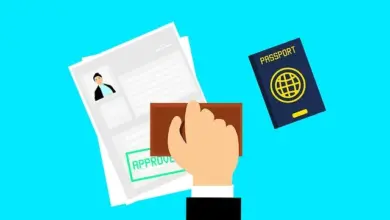How to Get an MBA Scholarship Without a GMAT Score

Pursuing an MBA is a significant investment in your future, but the cost of tuition can be daunting. Fortunately, many business schools offer scholarships to help ease the financial burden. Traditionally, the Graduate Management Admission Test (GMAT) has been a key component of MBA applications, including scholarship considerations. However, an increasing number of institutions now accept alternative criteria or waive the GMAT requirement altogether. If you’re aiming for an MBA scholarship without a GMAT score, here’s how you can position yourself for success.
Why Some Schools Waive the GMAT Requirement
Before diving into strategies, it’s important to understand why some schools no longer require the GMAT:
- Holistic Admissions Approach : Many programs evaluate candidates based on a broader range of factors, such as work experience, academic performance, leadership potential, and personal essays.
- Focus on Diversity : Schools aim to attract a diverse student body, including professionals from non-traditional backgrounds who may not have prepared for standardized tests.
- Alternative Metrics : Work experience, professional certifications (e.g., CFA, CPA), and other qualifications are increasingly valued as indicators of readiness for an MBA program.
If you don’t have a GMAT score, focus on strengthening these alternative aspects of your application to secure a scholarship.
1. Target GMAT-Optional or GMAT-Waiver Programs
The first step is identifying MBA programs that either do not require the GMAT or allow waivers under certain conditions. Here’s how to find them:
a) Research GMAT-Optional Schools
Many top-tier and mid-tier business schools now offer GMAT-optional admissions policies. Examples include:
- University of Chicago Booth School of Business
- Harvard Business School
- MIT Sloan School of Management
- NYU Stern School of Business
These schools typically place greater emphasis on other parts of your application, such as your resume, essays, and interviews.
b) Look for GMAT Waivers
Some schools provide GMAT waivers if you meet specific criteria, such as:
- Significant work experience (usually 5+ years).
- A strong undergraduate GPA.
- Professional certifications like CFA, CPA, or PMP.
- Completion of advanced degrees (e.g., Ph.D., JD, MD).
For example:
- University of Southern California Marshall School of Business offers waivers for applicants with extensive professional achievements.
- Northeastern University D’Amore-McKim School of Business grants waivers for relevant work experience or prior graduate coursework.
2. Highlight Your Professional Experience
If you’re applying without a GMAT score, your professional background becomes even more critical. Showcase your accomplishments in a way that demonstrates leadership, impact, and growth.
Tips for Emphasizing Work Experience
- Quantify Achievements : Use numbers to highlight your contributions. For instance, “Increased sales revenue by 30% within two years” is more compelling than vague statements.
- Showcase Leadership Roles : Highlight positions where you led teams, managed projects, or implemented innovative solutions.
- Align with Program Goals : Tailor your resume to reflect skills and experiences that align with the values and objectives of the MBA program.
3. Craft a Compelling Personal Statement
Your personal statement or essay is one of the most influential components of your application. It allows you to tell your story, explain why you don’t have a GMAT score, and articulate your goals.
Key Elements of a Strong Essay
- Explain the GMAT Waiver Request : Briefly address why you’re not submitting a GMAT score. Focus on your strengths instead of apologizing for the omission.
- Example: “Given my decade of experience in finance and proven track record of delivering results, I believe my professional achievements speak to my readiness for this program.”
- Demonstrate Passion and Purpose : Share your motivation for pursuing an MBA and how it aligns with your career aspirations.
- Highlight Unique Qualities : Discuss what sets you apart from other candidates, whether it’s overcoming challenges, excelling in a niche industry, or contributing to community initiatives.
4. Secure Strong Letters of Recommendation
Letters of recommendation can compensate for the absence of a GMAT score by providing third-party validation of your abilities and potential.
How to Choose Recommenders
- Select individuals who know you well professionally, such as supervisors, mentors, or colleagues.
- Ensure they can speak to your leadership qualities, problem-solving skills, and commitment to excellence.
What to Ask For
- Specific examples of your achievements.
- Insights into your character and work ethic.
- Endorsements of your ability to succeed in an MBA program.
5. Leverage Academic Performance
If you have a strong undergraduate GPA, emphasize it in your application. A high GPA signals academic aptitude and can offset the lack of a GMAT score.
Additional Steps
- If your GPA isn’t stellar, consider taking additional courses or earning certifications to demonstrate intellectual curiosity and capability.
- Highlight any honors, awards, or distinctions received during your studies.
6. Network Strategically
Building relationships with alumni, faculty, and admissions officers can strengthen your candidacy and increase your chances of securing a scholarship.
Networking Tips
- Attend virtual or in-person events hosted by the school.
- Connect with current students or alumni on LinkedIn to learn about their experiences.
- Reach out to admissions representatives to express your interest in the program and inquire about scholarship opportunities.
7. Apply Early
Scholarships are often awarded on a first-come, first-served basis. Applying early increases your chances of being considered for merit-based awards.
Benefits of Early Applications
- Demonstrates enthusiasm and proactive behavior.
- Allows time for feedback and revisions before deadlines.
- Maximizes access to limited scholarship funds.
8. Explore Alternative Funding Sources
If securing a traditional MBA scholarship proves challenging, explore other avenues for financial aid:
a) Employer Sponsorship
Some companies fund employees’ education as part of professional development programs. Present a clear case for how the MBA will benefit both you and the organization.
b) External Scholarships
Numerous organizations offer scholarships for MBA students, regardless of GMAT scores. Examples include:
- Forté Foundation Fellowships (for women pursuing MBAs).
- Consortium for Graduate Study in Management (for underrepresented minorities).
- Prospanica Scholarships (for Hispanic/Latino professionals).
c) Crowdfunding Platforms
Platforms like GoFundMe allow you to raise money for educational expenses. Share your story and goals to inspire support from friends, family, and the broader community.
9. Prepare for Interviews
If invited to interview, treat it as an opportunity to reinforce your qualifications and passion for the program.
Interview Preparation Tips
- Practice answering common MBA interview questions, such as:
- “Why do you want to pursue an MBA?”
- “What are your short-term and long-term career goals?”
- Be ready to discuss your decision to apply without a GMAT score confidently.
- Highlight transferable skills and experiences that make you a strong candidate.




